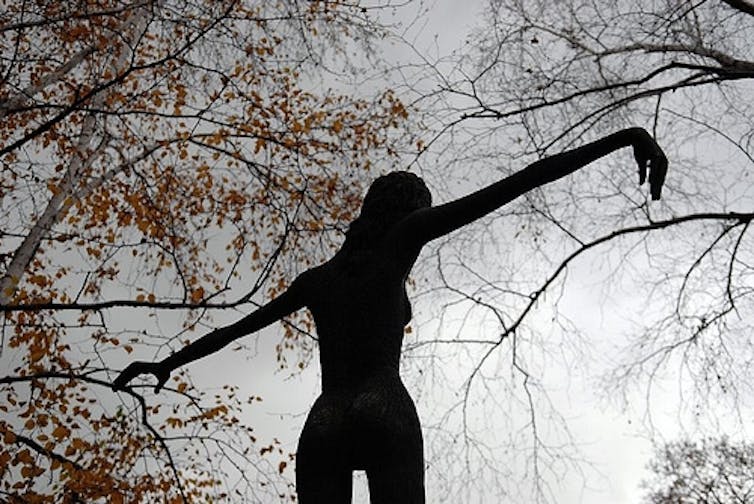April 30 is the 127th birthday of an artist whose name you likely don't be aware of, but his work may be the most widely dispensed of the twentieth century. regardless of under no circumstances leaving Chicago, Warner Sallman influenced how many Christians internationally, for more suitable or worse, photograph Jesus.
Anderson school in Indiana holds Sallman's gathered works. Their collection notes explain how pictures like Sallman's can be objects of attractiveness, old artefacts, mementos, articles of piety or propaganda in the service of an ideology. The actuality is that spiritual photographs can serve all these functions.
they could also promote products.
Reproductions of Sallman's heat, sympathetic, Nordic and very much non-historical "Head of Christ" hold in churches of every kind, and in confessional colleges and hospitals on every continent. In his e-book, Icons of yank Protestantism David Morgan of Valparaiso university in Indiana tells how thousands and thousands of pocket-sized "Heads of Christ" cards have been handed out by using the YMCA and Salvation army all the way through the 2d World warfare and carried to Europe and Asia with the aid of U.S. soldiers.
Sallman was a freelance illustrator and a religious member of the Swedish Evangelical Covenant Church. one in all Sallman's 1924 black and white sketches for the Covenant companion journal obtained such praise he painted it in oils, growing, in 1940, the "Christ" that would go on to promote 500 million copies. That number expanded exponentially when reproductions all started performing on clocks, lamps, buttons, laminated Bible verses, song packing containers and night-lights. When the "Head of Christ" grew to become a success, Sallman followed up with "Christ at heart's Door," and "Christ our Pilot."
Mass produced kitschAlready within the Thirties, there changed into a lengthy subculture of "Caucasian Jesus snap shots" just as there had been, considering that the mid-18th century, literary "lives of Jesus." These "lives" tended to portray Christ as representing the better of European (male) culture.
read extra: 'Paul, Apostle of Christ' owes extra to Coca-Cola than to the Bible
visible pictures of Jesus painted with the aid of Europeans mirrored folks that painted him; most effective on rare events, such as when Jesus became portrayed as a crimson-headed adolescence, did historians object. From the time of the ancient Romans, Christians have always "contextualized" Jesus of their own graphic.
What changed in the 20th century with Sallman, changed into that Jesus photographs met American advertising and mass construction. Prayer met plastic.
Is Sallman's portrait a kitsch Jesus? certainly it wasn't for the artist. regardless of his beard, the "Head of Christ" is anything however hipster irony. The photograph is just a little dated now. however for a lot of there's nothing jarring in the excessive brow, extensive shoulders and long nostril. For them here's, with ease, what Jesus seems like.
Masculine portrayal?curiously, Sallman changed into attempting to create a greater masculine Jesus than earlier portrayals. ironically, many now locate his Jesus effeminate — demonstrating the extent to which definitions of "masculine" are cultural and fluid rather than biological. In Jesus' personal day, and as a Jew within the Roman Empire, masculinity turned into as contested then as it is now.
Of route, the old Jesus changed into neither Nordic, nor American. The visual mono-subculture of the U.S., enormously new in Sallman's time, has seeing that given strategy to the fractured photograph-creation of the twenty first century — the conclusion of a taken-for-granted singular means of seeing.
 Almuth Lutkenhaus-Lackey's sculpture – Crucified woman – in the grounds of Emmanuel school at Victoria tuition in Toronto. Richard C. Choe/Emmanuel school
Almuth Lutkenhaus-Lackey's sculpture – Crucified woman – in the grounds of Emmanuel school at Victoria tuition in Toronto. Richard C. Choe/Emmanuel school the manner Christians picture Jesus, no matter if in two- or 3-dimensional art, says a lot concerning the manner they understand God. religious Christian artists painting Jesus as Nigerian, South Asian, Korean or Indigenous. Jesus has been sculpted by means of Canadian Timothy Schmalz as a homeless street adult and portrayed through different artists as a crucified woman or while faceless, a reflect to our angst.
Kitsch is within the eye of the beholder, or superior, the attitude of the client. There are bobble-head Jesuses and inflatable Jesus pillows.
The staying power of Sallman's 1940 Nordic "Head of Christ" tells us nothing concerning the first-century Mediterranean Jewish trainer. however the attraction of Sallman's painting displays an awful lot about both globalized Americana and normal religious sentiment — the form of astounding piety that may floor when a "Jesus picture" appears at a Tim Hortons in Cape Breton.
Kitsch has all the time been slippery to outline, and religious kitsch specifically so. had been he nevertheless alive, Sallman would doubtless insist his artwork had been just an aid to religion. They had been definitely anti-elitist.
besides the fact that children sincere Sallman's personal feelings, it is elaborate to differentiate the distribution of his pictures from the broader ideological program of mid-twentieth century the usa. On this anniversary, it's essential to bear in mind how powerfully formative feelings can still connect to a smartly-marketed photo.



No comments:
Post a Comment